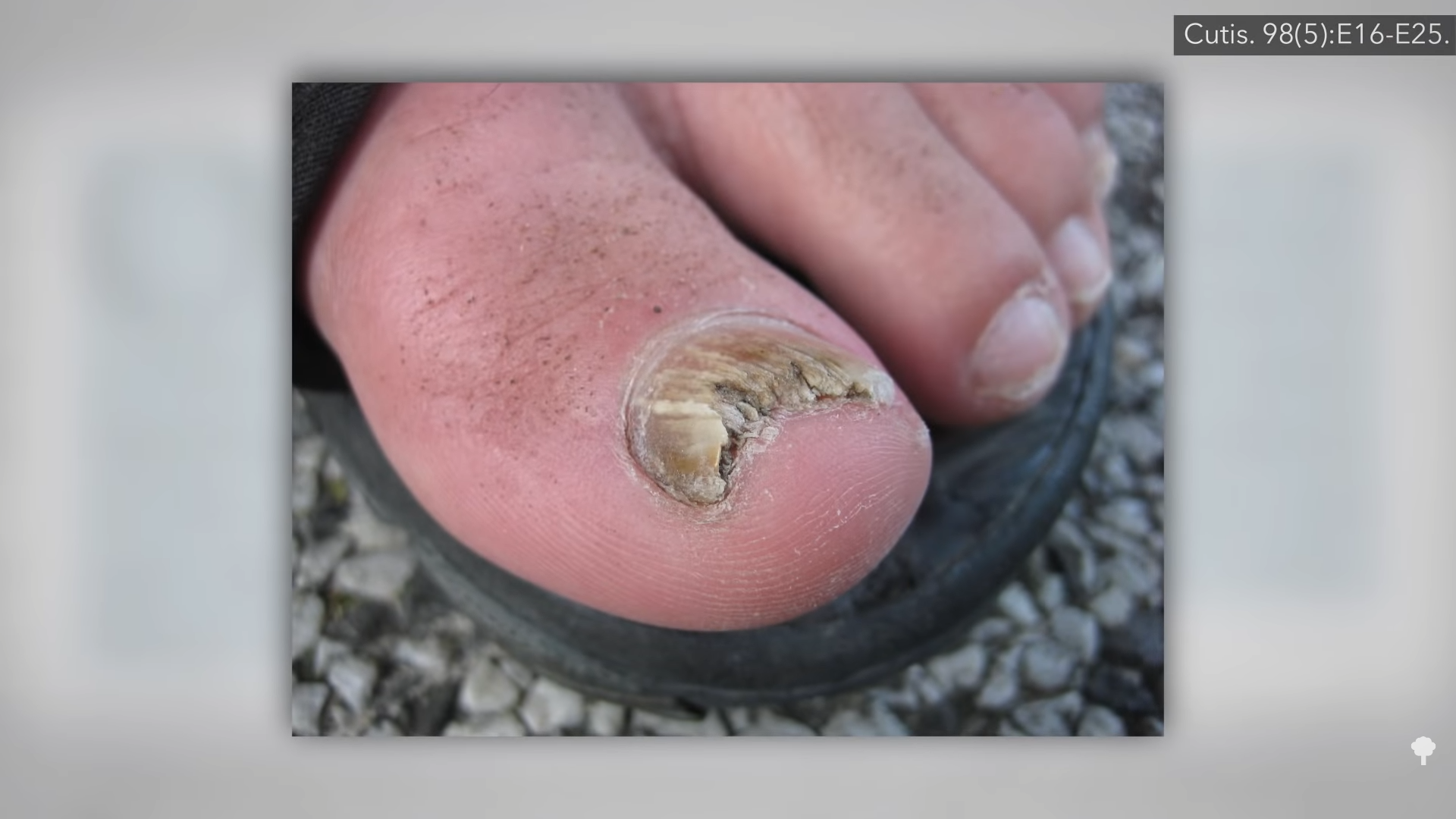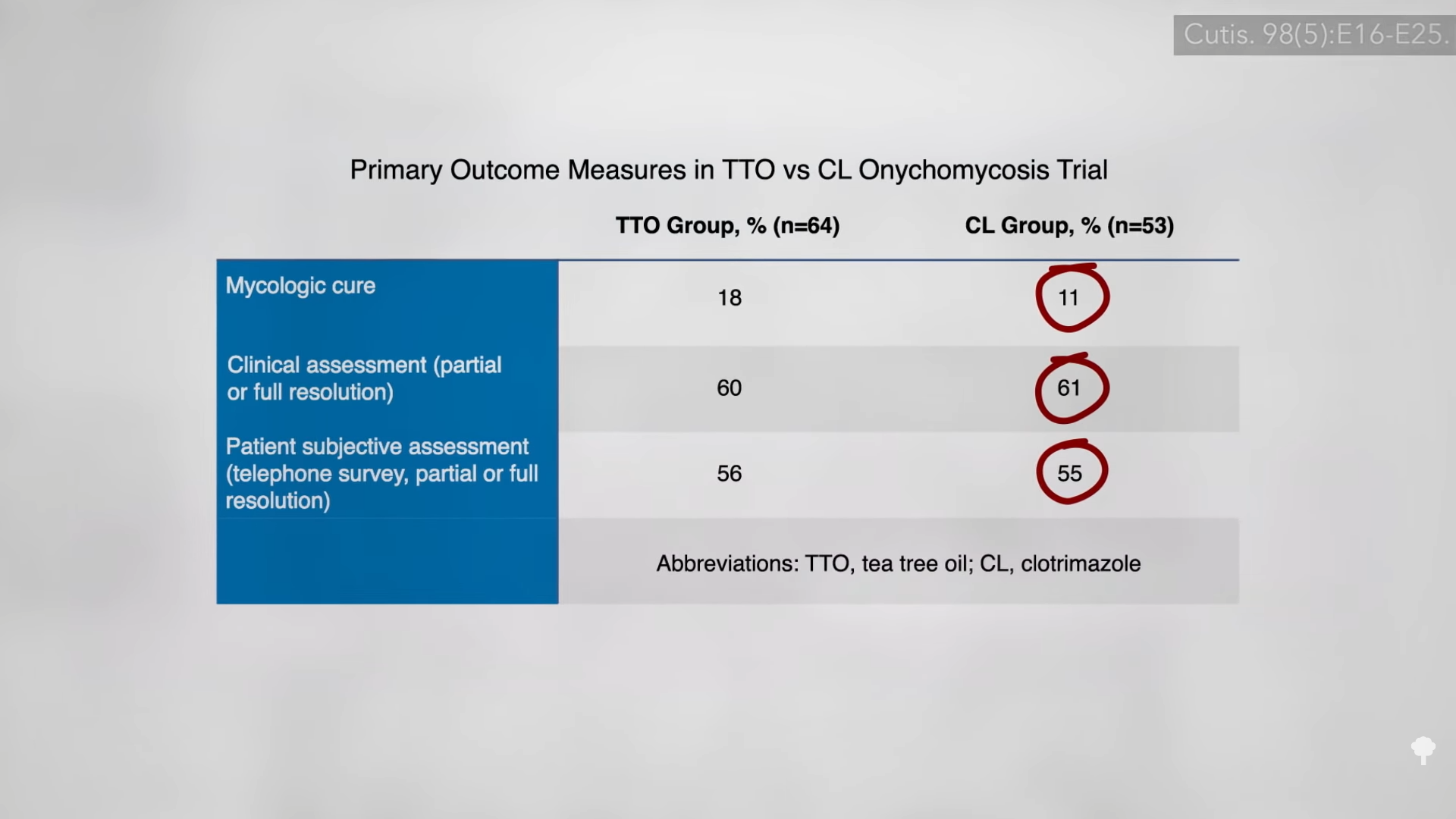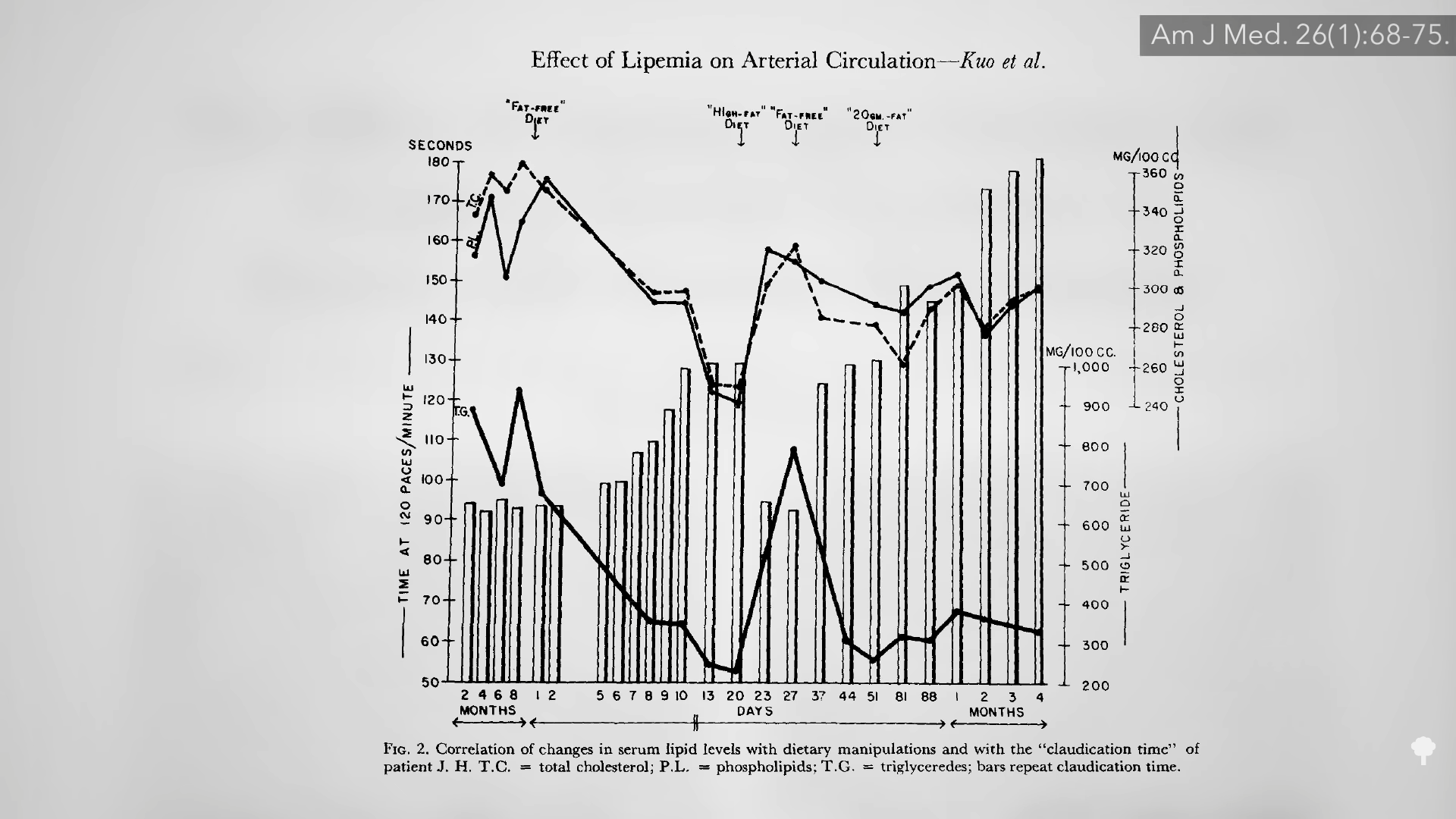Does Tea Tree Oil Work for Nail Fungus?
Tea tree essential oil is pitted against the antifungal cream lotrimin for the treatment of fungal nail infection, but what about treating the underlying cause?
Onychomycosis is a fungal infection of our nails, usually the toenails, but sometimes the fingernails. It is characterized by nail discoloration, deformity, detachment, thickening, crumbling, and ridging. You can see an example of onychomycosis below and at 0:19 in my video Does Tea Tree Oil Work for Nail Fungus?.

The reported prevalence is estimated to be about 1 in every 25 people, though it’s more common in older individuals—one in five individuals over 60 years of age and half of those older than 70 years. Unfortunately, it’s really hard to treat. The fungus can hide deep inside the nail, so it can remain protected from the blood supply on one side and any treatment you apply topically on the other. Therefore, “recurrence after treatment is common due to residual hyphae or spores that were not previously eliminated” even if you had been able to beat back the fungus. Many of the systemic oral treatments can be toxic, and “many topical applications require long treatment courses, which may limit patient compliance, especially in patients who want to use nail polish for cosmesis or camouflage” to cover it up.
Given all the problems with prescription antifungals, there has been “a renewed interest” in natural remedies. If tea tree oil can affect athlete’s foot and dandruff fungus, what about nail fungus?
A study combining the antifungal drug in Lotrimin cream with tea tree oil seemed pretty effective. “After 16 weeks, 80% of patients using medicated cream were cured, as opposed to none in the placebo group,” so we know the drug and tea tree oil were better than no treatment, but what about compared to each other?
A head-to-head study compared tea tree oil with clotrimazole, a common antifungal drug. In a double-blind, randomized, controlled trial, patients received twice-daily application on the nail of either the drug or pure tea tree oil over a six-month period. Debridement was performed every few months, where some of the fungal mass was debulked, scraped, or ground off. As you can see below and at 1:56 in my video, after six months, the drug completely wiped out the fungus in only about 1 in every 10 cases, but the infection looked better, with partial or full resolution of the appearance, in the majority of subjects either from the doctor’s assessment or the patient’s own assessment. And the tea tree oil? It did just as well as the drug! “The two preparations were comparable in efficacy of cure, clinical assessment, and subjective improvement. Their cost is also comparable.” “For patients desiring a ‘natural’ treatment for tinea pedis [athlete’s foot] or onychomycosis [nail fungus], topical tea tree oil is a reasonable alternative to prescription or over-the-counter antifungals.”

Speaking of natural treatments, how about a truly natural treatment? “One potential reason for the poor long-term benefits of any therapy [for nail fungus] is that it may be treating only a manifestation of underlying disease(s), such as generalized immune suppression or peripheral micro- or macrovascular disease.” Maybe fungal nail infections are just a manifestation of poor peripheral blood circulation that would normally allow your body’s natural defenses to keep the fungus from taking root in the first place.
There was a non-English language study of 400 patients that “looked at the ‘relationship between blood circulation of the skin and the development of fungus disease’ and found a greater than 50% reduction in blood flow in patients with tinea pedis [athlete’s foot] and onychomycosis [nail fungus] as compared with patients without these disorders.” If fungal nail infections are just “a symptom of an underlying process, then treatment aimed at eradication of a pathogen may be unrealistic.” No wonder the fungus so often just grows right back. A more appropriate goal may be to give up and live with it. Hold on, though. If it’s a circulation problem, why not try to improve the circulation?
We’ve known since the 1950s that you can effectively switch peripheral artery circulation on and off like a light switch within days by switching people between a low-fat, plant-based diet and the more conventional diet that contributed to the problem in the first place. You can see an interesting graph on this below and at 3:50 in my video.

Interested in learning more about improving peripheral circulation? See my video Benefits of Beans for Peripheral Vascular Disease.
What about other fungal infections? Check out Does Tea Tree Oil Work for Dandruff and Athlete’s Foot?.
KEY TAKEAWAYS
- Onychomycosis, a fungal infection of our nails, is characterized by discoloration, deformity, detaching, thickening, crumbling, and ridging, and may affect about 1 in 25 people, typically older adults.
- The infection is difficult to treat as the fungus is deep inside the nail, protected from the blood supply on one side and any topical treatment applied on the other. As well, systemic oral treatments can be toxic.
- Combining Lotrimin cream, an antifungal drug, with tea tree oil was effective in 80 percent of patients after 16 weeks, compared with none in the placebo group.
- In a head-to-head study of tea tree oil with clotrimazole, a common antifungal, the two preparations were comparable; patients wanting a “natural” treatment for athlete’s foot or nail fungus may consider topical tea tree oil over prescription of over-the-counter antifungals.
- Might there be a relationship between poor circulation and the development of fungal disease? A study found a greater than 50 percent reduction in blood flow in patients with athlete’s foot and nail fungus.
- Switching to a low-fat, plant-based diet can improve peripheral artery circulation, compared with a more conventional diet that contributes to the problem.
My other tea tree oil videos include:
- Is Tea Tree Oil Safe?
- Does Tea Tree Oil Have Hormonal Side Effects?
- Benzoyl Peroxide vs. Tea Tree Oil for Acne
- Benefits of Tea Tree Oil for Warts and Cold Sores
- Do Natural and DIY Tea Tree Oil Cleaning Products Disinfect as Well as Bleach?
In health,
Michael Greger, M.D.
PS: If you haven’t yet, you can subscribe to my free videos here and watch my live presentations:
- 2019: Evidence-Based Weight Loss
- 2016: How Not to Die: The Role of Diet in Preventing, Arresting, and Reversing Our Top 15 Killers
- 2015: Food as Medicine: Preventing and Treating the Most Dreaded Diseases with Diet
- 2014: From Table to Able: Combating Disabling Diseases with Food
- 2013: More Than an Apple a Day
- 2012: Uprooting the Leading Causes of Death
